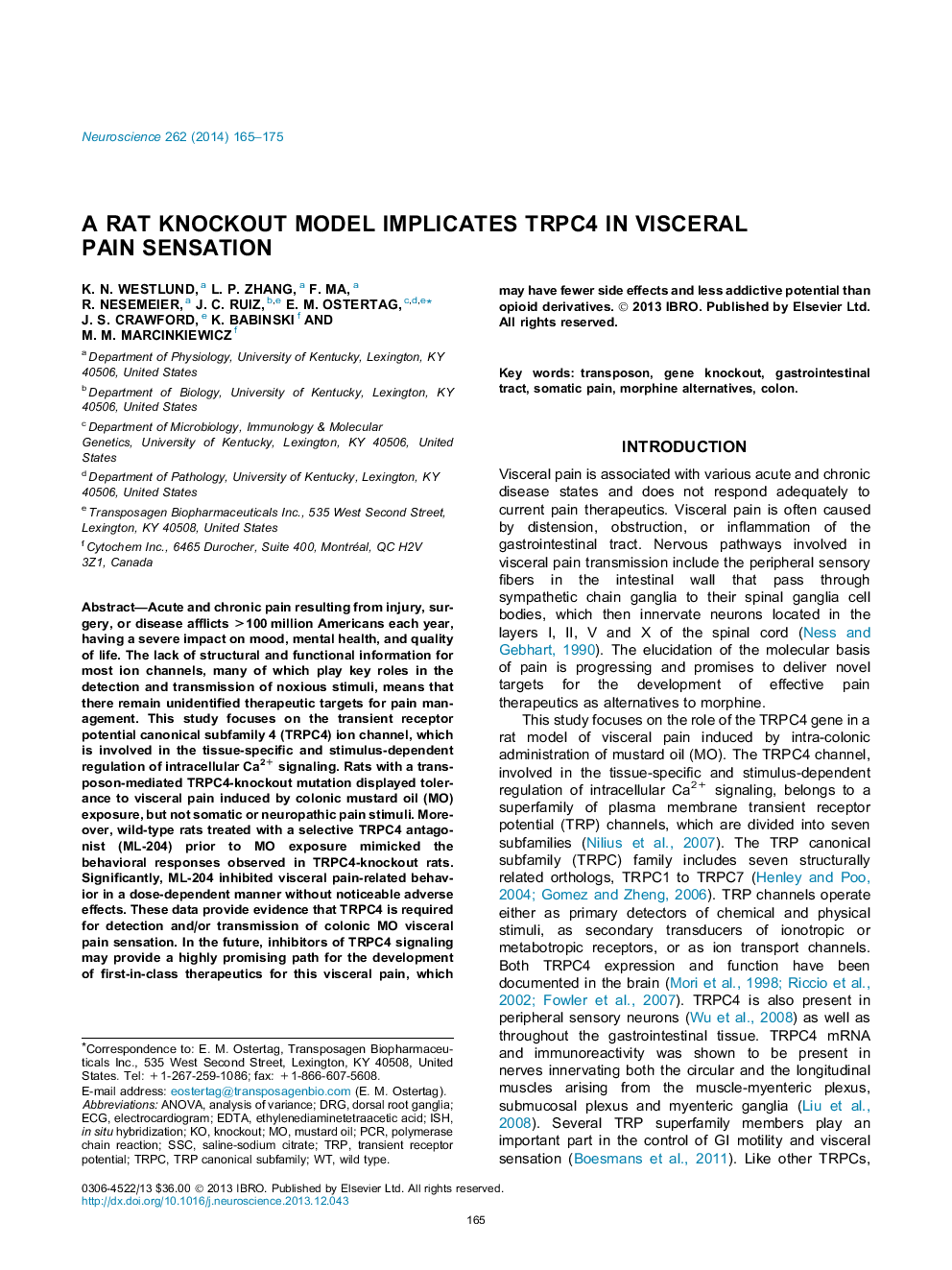| کد مقاله | کد نشریه | سال انتشار | مقاله انگلیسی | نسخه تمام متن |
|---|---|---|---|---|
| 6274072 | 1614814 | 2014 | 11 صفحه PDF | دانلود رایگان |

- We show that TRPC4 plays a role in visceral pain transmission pathways.
- TRPC4 knockout rats show no behavioral responses to mustard oil intracolonic exposure.
- A TRPC4 small molecule antagonist, ML-204, mimics the responses seen in knockout rats.
Acute and chronic pain resulting from injury, surgery, or disease afflicts >100Â million Americans each year, having a severe impact on mood, mental health, and quality of life. The lack of structural and functional information for most ion channels, many of which play key roles in the detection and transmission of noxious stimuli, means that there remain unidentified therapeutic targets for pain management. This study focuses on the transient receptor potential canonical subfamily 4 (TRPC4) ion channel, which is involved in the tissue-specific and stimulus-dependent regulation of intracellular Ca2+ signaling. Rats with a transposon-mediated TRPC4-knockout mutation displayed tolerance to visceral pain induced by colonic mustard oil (MO) exposure, but not somatic or neuropathic pain stimuli. Moreover, wild-type rats treated with a selective TRPC4 antagonist (ML-204) prior to MO exposure mimicked the behavioral responses observed in TRPC4-knockout rats. Significantly, ML-204 inhibited visceral pain-related behavior in a dose-dependent manner without noticeable adverse effects. These data provide evidence that TRPC4 is required for detection and/or transmission of colonic MO visceral pain sensation. In the future, inhibitors of TRPC4 signaling may provide a highly promising path for the development of first-in-class therapeutics for this visceral pain, which may have fewer side effects and less addictive potential than opioid derivatives.
Journal: Neuroscience - Volume 262, 14 March 2014, Pages 165-175